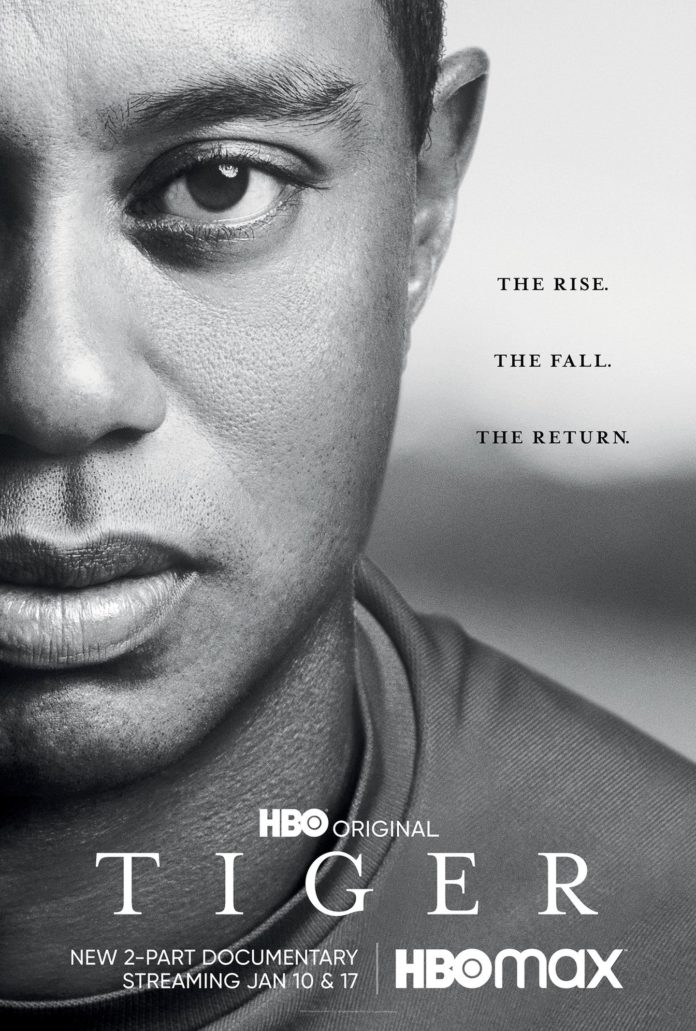Everyone knows of Tiger Woods. He is not just one of the best golfers of all time, but also one of the most successful athletes in history. Since the age of two, his entire life has revolved around the sport of golf. And while there were a few hiccups along the way, he continues to this day to be the legend and hero many often see him as.
HBO’s Tiger attempts to tell this Tiger Woods story…just without Tiger Woods’ consent and involvement. In fact, we barely hear from Woods throughout the entire two-part documentary besides interviews at various tournaments and old family videos. Instead, we are introduced to ex-girlfriends, mistresses, caddies, old family friends who attempt to give their take on nearly every aspect of his life. It’s insightful to the outside world of the life of an often-private celebrity, but it feels almost unethical.
But this is the key to Tiger’s success. Without having Woods involved, we don’t have a first-person perspective of these events. Rather, we are presented with stories from those around him that attempt to fill in the multiple gaps of Woods’ life story and provide a greater context to who the legend is when he’s not on the golf course.
Between both episodes, there is one consistent element that is always present: Tiger’s father, Earl. Earl was the first to hand Tiger a club at only two years old and he watched him compete at nearly every major national tournament of his career before his death in 2006. His words of wisdom, through archival footage and interviews, shows the influence, good and bad, the man had on Tiger. Earl is Tiger’s biggest supporter, and the father-son dynamic this documentary presents establishes an understanding of all Tiger’s actions throughout his life: both on and off the green.
There is a clear divide in both episodes: pre and post scandals. The first half deals with Tiger’s upbringing and many of his earliest championships. We basically watch every important moment of his first Masters win in 1997 at 21 years old all the way to Woods being regarded as one of the world’s greatest role models. Mixed in are some great edits of various golf moments throughout his early career that really emphasize how monumental Woods has been to the sport.
Also in this first episode, we see the way the world perceives Woods. He describes himself early in his career as a “Cablinasian,” a mix of his Caucasian, Black, Asian, and Indian on the Oprah Winfrey Show. This is in contrast to the media simply covering him as African American. It presents an interesting angle and parallel of Woods being so much more than he appears to the general public. Everyone knows him for being a superstar athlete, but few know the “real Tiger.”
This brutally honest side is exposed in episode two, jumping directly into the many scandals that tarnished Woods’ image. From his 2009 car crash outside his home, the number of infidelity scandals, and his 2017 arrest, Tiger begins to take the focus away from his athletic career and begins to dive into a personal expose that often feels exploitive without having Woods’ involvement. Ultimately, this is marketed as a documentary, which should primarily provide facts rather than opinions. Having this one-sided story makes the audience question what is fact and what is fiction.
Luckily the story ends on an exuberant note with Woods’ career spike that led to his 2019 Masters win. It feels almost full circle in the way that the story managed to tell his rise, fall, and rise in its three-hour runtime, hitting on every important milestone along the way.
While it’s difficult to make a documentary without the main subject providing their input, Tiger somehow works around this feat. And it provides a more human side to the superstar than he could have provided himself.
The impact Woods has had can best be summed up by a quote often referenced throughout the documentary by Earl Woods prior to Tiger winning his first Masters Tournament: “The world will be a better place to live in by virtue of his existence and his presence. This is my treasure. Please accept it and use it wisely.”









